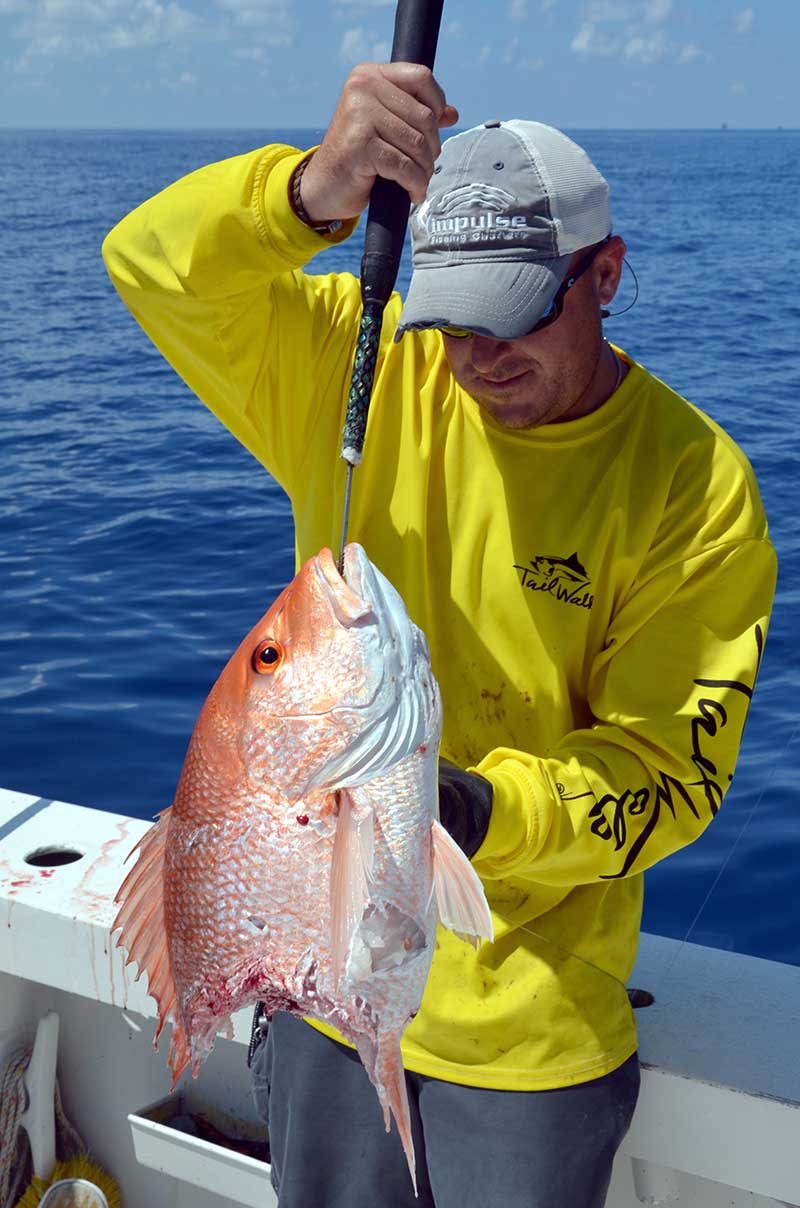
Anglers often have to land catch before it can become shark’s dinner
“You’re gonna need a bigger boat!” Amity Police Chief Brody uttered those famous words to Captain Quint in the 1975 blockbuster movie Jaws when confronted with a giant killer great white shark up close.
That movie brought attention to sharks — unwanted attention. As the “villain” in the movie, the fictional shark prompted people to kill any real sharks whenever they saw them. That caused some shark populations to plummet. Many states, including Louisiana, enacted restrictive laws to protect sharks.
“In state waters, we had a closure that ran April through June,” explained Jason Adriance, the Finfish Program Manager in Marine Fisheries for the Louisiana Department of Wildlife and Fisheries in New Orleans. “That was put in place in the late 1980s when populations of bull sharks and blacktips were beginning to be harvested in greater numbers and some shark species were declining.
“That was done to protect those sharks pupping young. Now, some of those species, in particular bull and blacktip sharks, have rebounded very well. The state regulation was modified in December 2022, given those increasing populations. That allows recreational and commercial anglers more opportunities to fish for and keep some sharks. We now allow fishing for sharks all year long, but some species are still state and federally protected.”
Problem for anglers
The most problems Louisiana outdoorsmen face with sharks is when anglers get a prized catch on the line, but by the time they can reel it up to the side of the boat, half of it is missing because it became a feeding shark’s dinner.
Anglers also have to be careful when landing a shark, especially putting it in the boat. A shark bite can come in an instant and without notice.
Top predators, sharks occasionally bite people in the wild, sometimes kill them. Most bites probably come when a shark sees a hand or foot in the water and mistakes it for a fish or other prey. Since 2000, Louisiana recorded only three shark bites, none fatal. The last fatal attack in Louisiana waters occurred in Lake Pontchartrain in 1914.
Proven man-eaters like great whites, tigers can grow to 20 feet long and weigh more than 1,700 pounds. They sometimes feed in shallow water. Young tigers stay in estuaries until they grow large enough to head offshore.
“Some great whites and tiger sharks live in the Gulf of Mexico,” Adriance said. “Those larger sharks are usually much farther from shore. Pelagic sharks like makos and hammerheads are also offshore. In the summer, the most common sharks in Louisiana waters are bull sharks and blacktip sharks. We also see a fair amount of spinner sharks. Some smaller sharks include Atlantic sharpnose and bonnetheads, which look something like a small hammerhead.”

Atlantic sharpnose sharks average about 2.5 to three feet long. Blacktips enter brackish estuaries and can weigh more than 250 pounds. Known for their dramatic spinning leaps, spinner sharks somewhat look like a bull shark and can exceed seven feet long.
Stocky, powerful and aggressive, bull sharks can top 11 feet long and weigh more than 600 pounds. These sharks readily enter brackish systems and can live in fresh water. People reported bull sharks in the Mississippi River as far north as Alton, Illinois about 700 miles from the Gulf.
“Bulls and blacktips have their young in the spring and summer so they’ll come farther inshore,” Adriance said. “The Atchafalaya area is a very common bull shark pupping location. They have been reported in the Atchafalaya River as far as Simmesport.”
Bulls in Pontchartrain
Each summer, bulls enter Lake Pontchartrain. Mackie Bellott with Wicked Fishing Charters (985-710-2882, www.wickedfishinglouisiana.com) in Mandeville regularly fishes for sharks in Lake Pontchartrain and associated waters.
“In April, we’ll start encountering sharks in the Lake St. Catherine area,” Bellott said. “We start seeing sharks around the Mandeville area in late May and catch them into August. We’ve caught them in Bayou Lacombe. Capt. Andy Jones and I once caught 16 bull sharks in one trip. We’ve caught some that exceeded five feet. Captain Andy spotted one he estimated to be about eight to nine feet long. It probably weighed more than 250 to 300 pounds.”
Most bites involve people who engage in risky behavior. Wade fishermen commonly attach their catch to long stringers. Some fish might bleed. Sharks can detect minute blood particles from long distances. Sharks typically feed at dusk and dawn, so use extra care then and don’t swim during those hours. Never go in the water with a bleeding wound.
As shark populations rise and more humans head to the waters, shark-human encounters will rise. Play it safe where sharks live, especially this time of year.